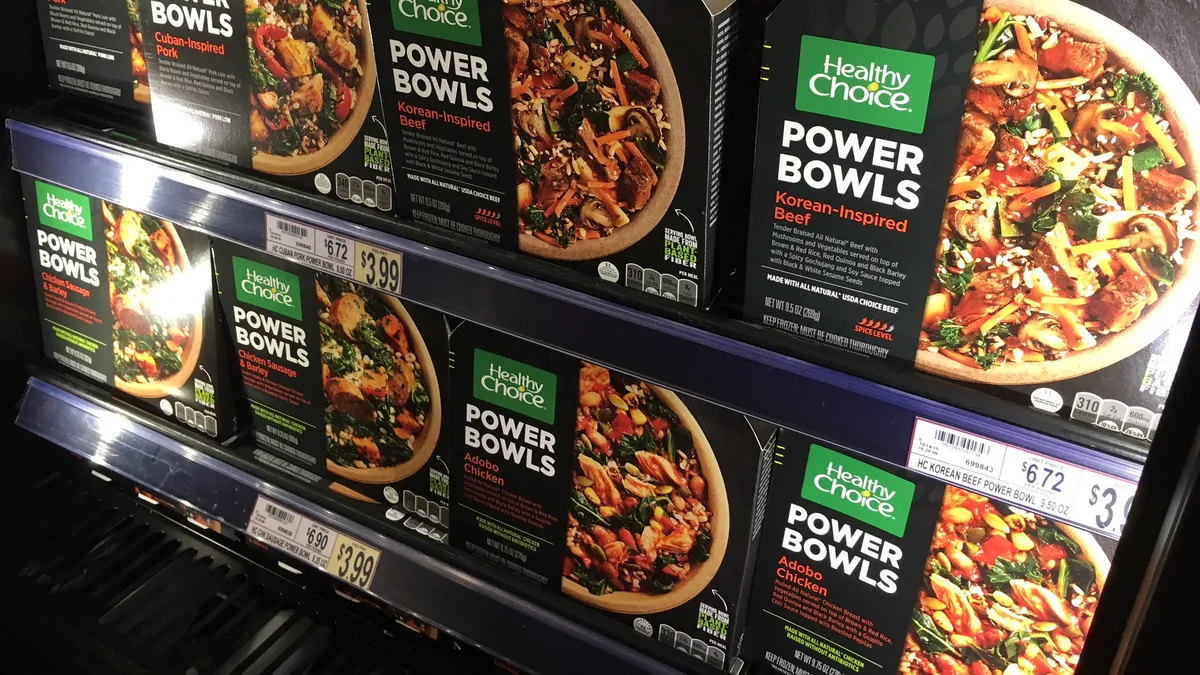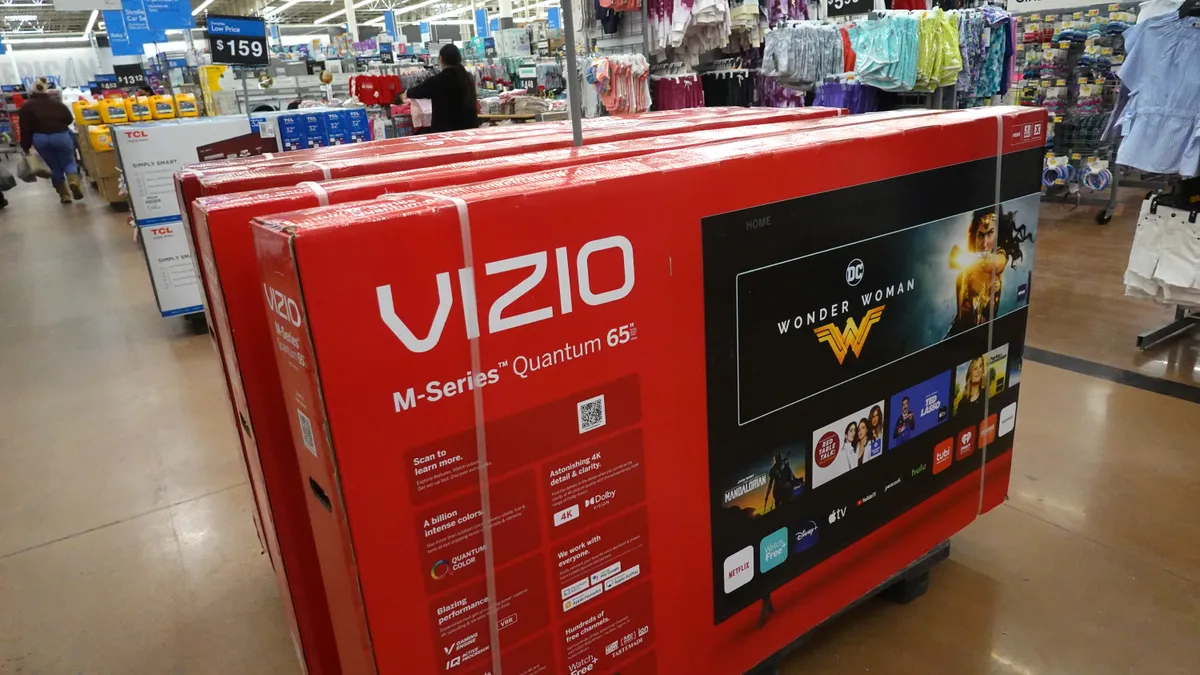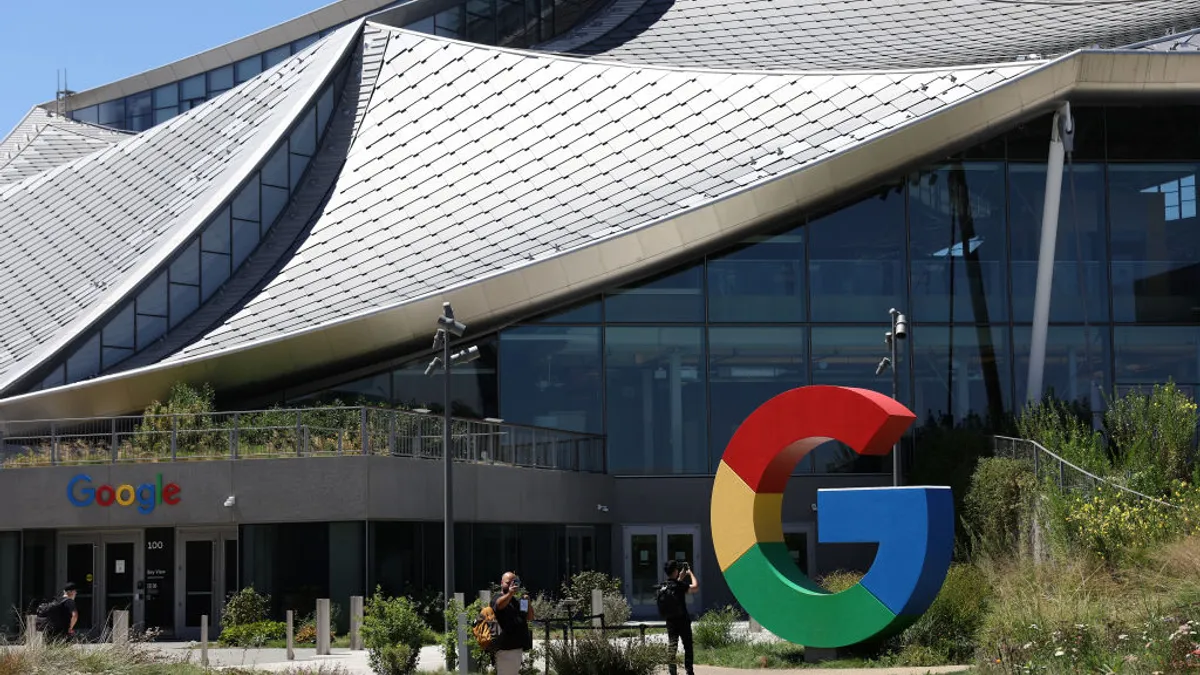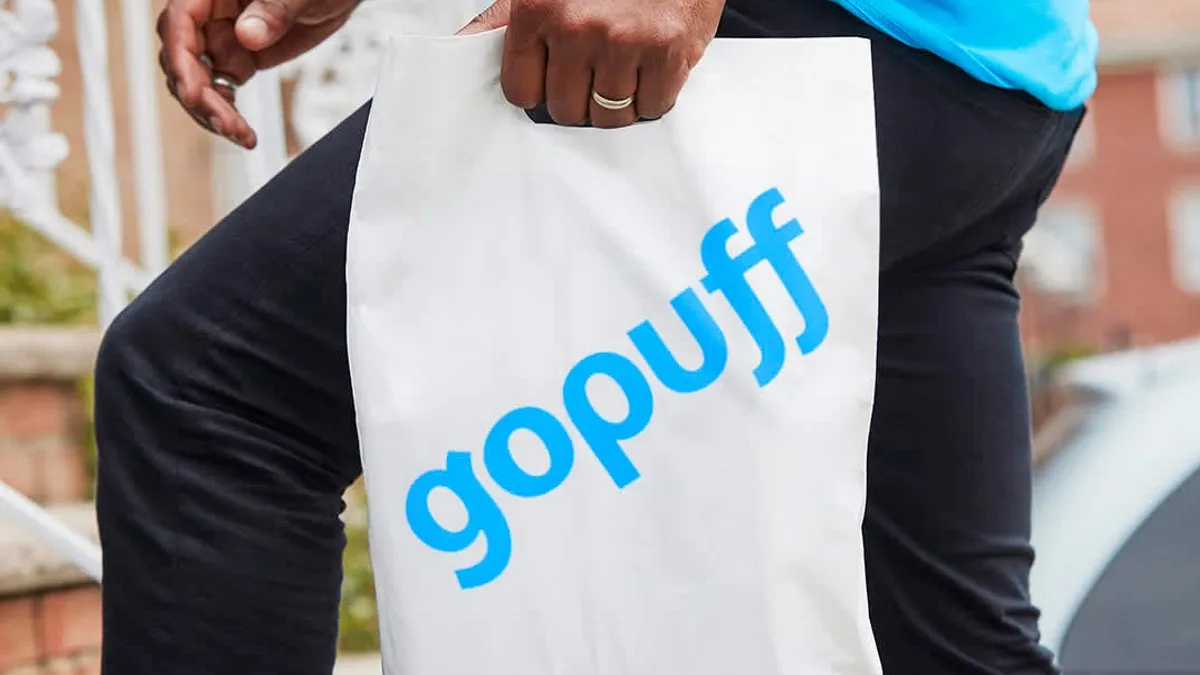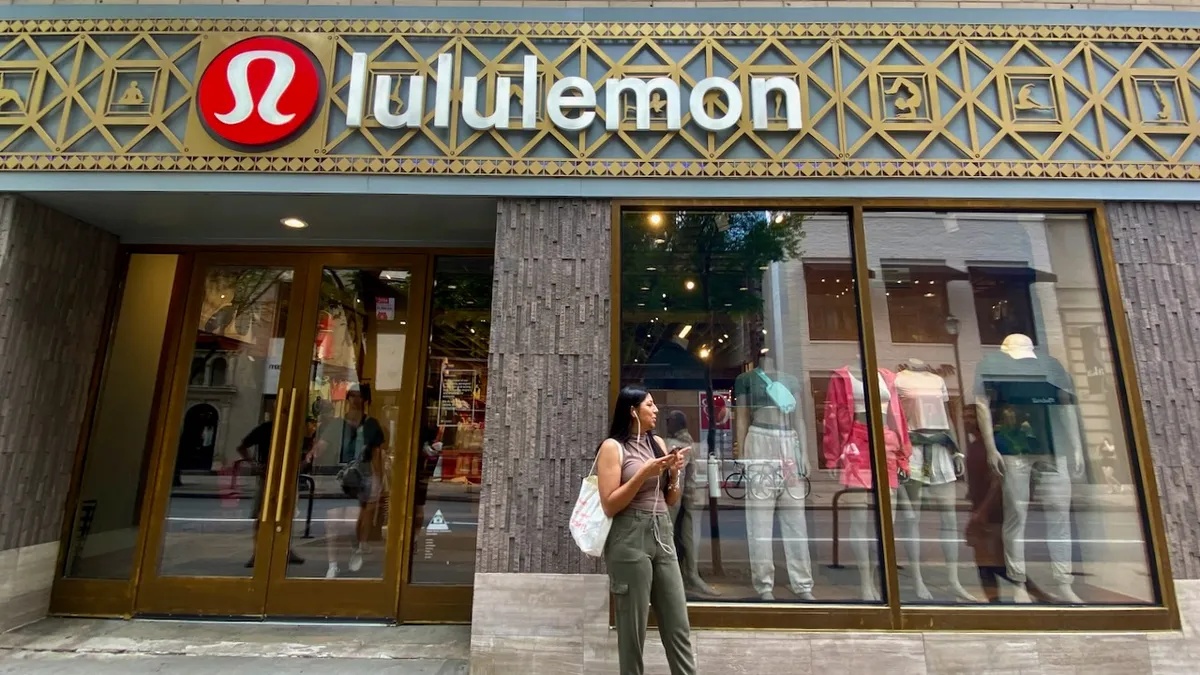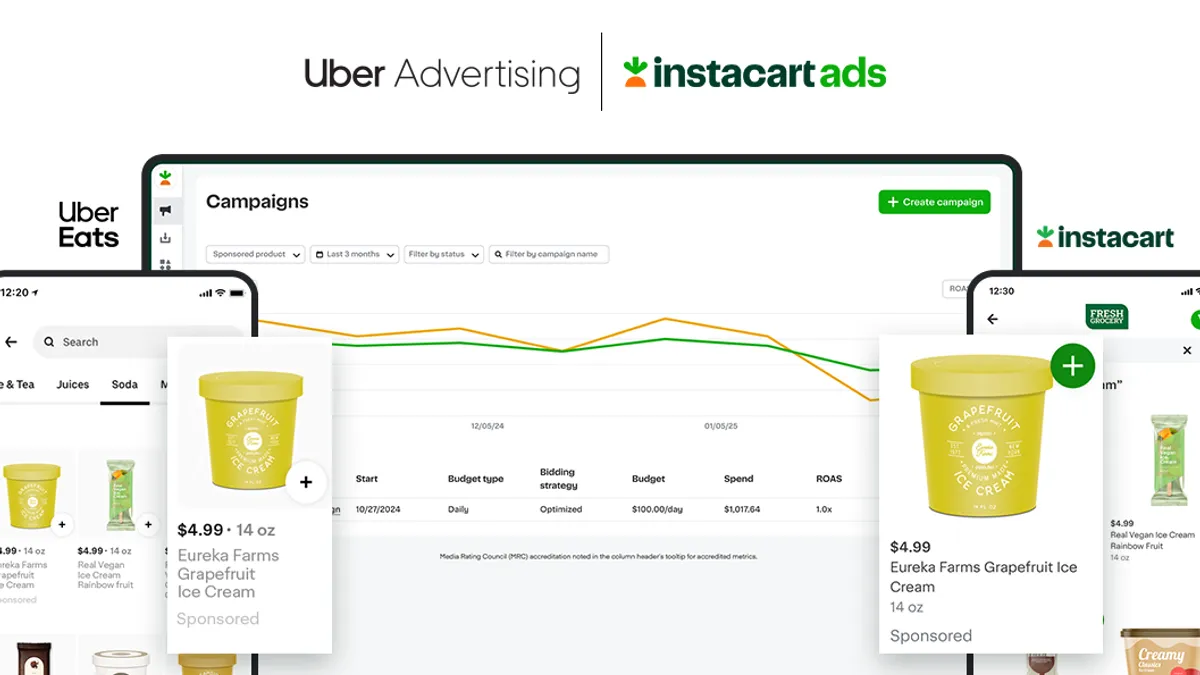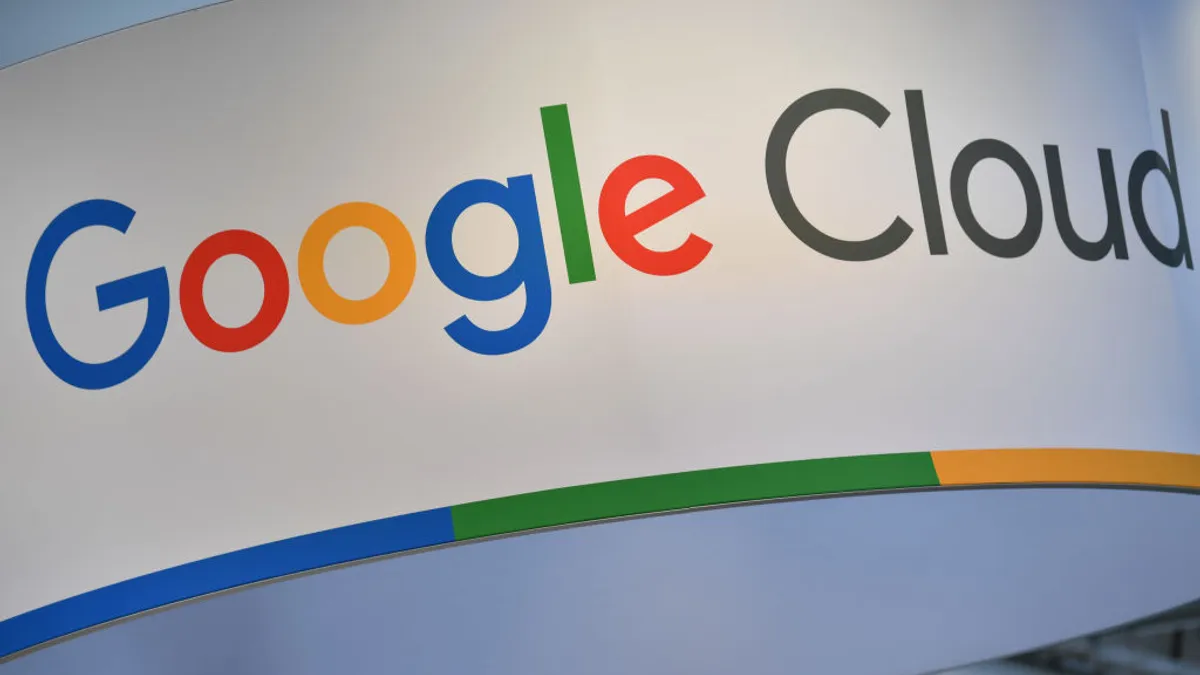There was little doubt four years ago that Conagra Brands' frozen portfolio was full of iconic items that had grown tired and, according to its then-new CEO Sean Connolly, were "trapped in time."
While products such as Healthy Choice — with its heart-healthy message — and Banquet — popular for its $2 turkey and gravy and salisbury steak entrees — were still generating revenue, the products looked much the same as decades before. The result: sales sharply fell as consumers turned to trendier flavors and better-for-you options.
Executives realized the decades-old process used to create and test products wasn't translating into meaningful sales. Simply introducing new flavors or boosting advertising was no longer enough to entice consumers to buy. If Conagra maintained the status quo, the CPG giant only risked exacerbating the slide and putting its portfolio of brands further behind the competition.
"We were doing all this work into what I would call validation insights, and things weren't working," Bob Nolan, senior vice president of demand sciences at Conagra, told Food Dive. "How it could it not work if we asked consumers what they wanted, and we made it, and then it didn't sell? ...That’s when the journey started. Is there a different way to approach this?”
Nolan and other officials at Conagra eventually decided to abandon traditional product testing and market research in favor of buying huge quantities of behavioral data. Executives were convinced the data could do a better job of predicting eventual product success than consumers sitting in an artificial setting offering feedback.
Conagra now spends about $15 million less on testing products than it did three years ago, with the much of the money now going toward buying data in food service, natural products, consumption at home, grocery retail and loyalty cards. When Nolan started working at Conagra in 2012, he estimated 90% of his budget at the company was spent on traditional validation research such as testing potential products, TV advertisements or marketing campaigns. Today, money spent on those methods has been cut to zero.
While most food and beverage companies have not changed how they go about testing their products as much as Conagra, CPG businesses throughout the industry are collectively making meaningful changes to their own processes.
With more data avaliable now than ever before, companies can change their testing protocol to answer questions they might have previously not had the budget or time to address. They're also turning to technology such as videos and smartphones to immediately enagage with consumers or to see firsthand how they would respond to their prototype products in real-life settings, like their own homes.
As food manufacturers scramble to remain competitive and meet the shopper's insatiable demand for new tastes and experiences, changing how they go about testing can increase the liklihood that a product succeeds — enabling corporations to reap more revenue and avoid being one of the tens of thousands of products that fail every year.
For Conagra, the new approach already is paying off. One success story came in the development of the company's frozen Healthy Choice Korean-Inspired Beef Power Bowl. By combing data collected from the natural food channel and specialty stores like Whole Foods and Sprouts Farmers Market, the CPG giant found people were eating more of their food in bowls — a contrast to offerings in trays.
"How it could it not work if we asked consumers what they wanted, and we made it, and then it didn't sell? ...That’s when the journey started. Is there a different way to approach this?"

Bob Nolan
Senior vice president of demand sciences, Conagra
At the same time, information gathered from restaurants showed Korean was the fastest-growing cuisine. The data also indicated the most popular flavors within that ethnic category. Nolan said without the data it would have been hard to instill confidence at Conagra that marketing a product like that would work, and executives would have been more likely to focus on flavors the company was already familiar with.
Since then, Conagra rebranded Healthy Choice around cleaner label foods with recognizable, modern ingredients that were incorporated into innovations such as the Power Bowl. The overhaul helped rejuvenate the 34-year old brand, with sales jumping 20% during the last three years after declining about 10% during the prior decade, according to the company.
Conagra has experienced similar success by innovating its other frozen brands, including Banquet and Marie Callender's. For a company where frozen sales total $5.1 billlion annually, the segment is an important barometer for success at Conagra.
A decades-old approach
For years, food companies would come up with product ideas using market research approaches that dated back to the 1950s. Executives would sit in a room and mull over ways to grow a brand. They would develop prototypes before testing and retesting a few of them to find the one that would have the best chance of resonating with consumers. Data used was largely cultivated through surveys or focus groups to support or debunk a company idea.
"It's an old industry and innovation has been talked about before but it's never been practiced, and I think now it's starting to get very serious because CPG companies are under a lot of pressure to innovate and get to market faster," Sean Bisceglia, CEO of Curion, told Food Dive. "I really fear the ones that aren’t embracing it and practicing it ... may damage their brand and eventaully damage their sales.”
Information on nearly every facet of a consumer's shopping habits and preferences can be easily obtained. There is data showing how often people shop and where they go. Tens of millions of loyalty cards reveal which items were purchased at what store, and even the checkout lane the person was in. Data is available on a broader level showing how products are selling, but CPGs can drill down on an even more granular level to determine the growth rate of non-GMO or organic, or even how a specific ingredient like turmeric is performing.
Market research firms such as Nielsen and Mintel collect reams of valuable data, including when people eat, where and how they consume their food, how much time they spend eating it and even how it was prepared, such as by using a microwave, oven or blender.
To help its customers who want fast results for a fraction of the cost, Bisceglia said Curion has created a platform in which a product can be tried out among a random population group — as opposed to a specifically targeted audience made up of specific attributes, like stay-at-home moms in their 30s with two kids — with the data given to the client without the traditional in-depth analysis. It can cost a few thousand dollars with results available in a few days, compared to a far more complicated and robust testing process over several months that can sometimes cost hundreds of thousands of dollars, he said.
Curion, which has tested an estimated 8,000 products on 700,000 people during the last decade, is creating a database that could allow companies to avoid testing altogether.
For example, a business creating a mango-flavored yogurt could initially use data collected by a market research firm or someone else showing how the variety performed nationwide or by region. Then, as product development is in full swing, the company could use Curion's information to show how mango yogurt performed with certain ages, income levels and ethnicities, or even how certain formulations or strength of mango flavor are received by consumers.
"What's actually going to be able to predict if someone is going to buy something, and are they going to buy it again and again and again? You have to get smart on what is the payoff at the end of all of the data. And just figure out what the key measures are that you need and stop collecting, if you can, all this other ancillary stuff."

Lori Rothman
Owner, Lori Rothman Consulting
Lori Rothman, who runs her own consulting firm to advise companies with their product testing, worked much of the last 30 years at companies including Kraft and Kellogg to determine the most effective way to test a product and then design the corresponding trial. She used to have days or weeks to review data and consumer comments before plotting out the best way to move forward, she said.
In today's marketplace, there is sometimes pressure to deliver within a day or even immediately. Some companies are even reacting in real time as information comes in — a precedent Rothman warned can be dangerous because of the growing amount of data available and the inherent complexity in understanding it.
"It's continuing toward more data. It's just going to get more and more and we just have to get better at knowing what to do with it, and how to use it, and what's actually important. What's actually going to be able to predict if someone is going to buy something, and are they going to buy it again and again and again?" Rothman said. "You have to get smart on what is the payoff at the end of all of the data. And just figure out what the key measures are that you need and stop collecting, if you can, all this other ancillary stuff."
Sweet relief
Ferrara Candy, the maker of SweeTarts, Nerds and Brach's, estimated the company considers more than 100 product ideas each year. An average of five typically make it to market.
To help whittle down the list, the candy company owned by Nutella-maker Ferrero conducts an array of tests with consumers, nearly all of them done without the customary focus group or in-person interview.
Daniel Hunt, director of insights and analytics for Ferrara, told Food Dive rather than working with outside vendors to conduct research, like the company would have a decade ago, it now handles the majority of testing itself.
In the past, the company might have spent $20,000 to run a major test. It would have paid a market research firm to write an initial set of questions to ask consumers, then refine them, run the test and then analyze the information collected.
Today, Hunt said Ferrara's own product development team, most of whom have a research background, does most of the work creating new surveys or modifying previously used ones — all for a fraction of the cost. And what might have taken a few months to carry out in the past can sometimes be completed in as little as a few weeks.
"Now when we launch a new product, it’s not much of a surprise what it does, and how it performs, and where it does well, and where it does poorly. I think a lot of that stuff you've researched to the point where you know it pretty well," Hunt told Food Dive. “Understanding what is going to happen to a product is more important — and really understanding that early in the cycle, being able to identify what are the big potential items two years ahead of launching it, so you can put your focus really where it’s most important.”
Increasingly, technology is playing a bigger part in enabling companies such as Ferrara to not only do more of their own testing, but providing them with more options of how best to carry it out.
Data can be collected from message boards, chat rooms and online communities popular with millennials and Gen Zers. But technology does have its limits. Ferrara aims to keep the time commitment for its online surveys to fewer than seven minutes because Hunt said the quality of responses tends to diminish for longer ones, especially among people who do them on their smartphones.
Other research can be far more rigorous, depending on how the company plans to use the information.
"I don’t think that (testing is) going away or becoming less prevalent, but certainly the way that we’re testing things from a product standpoint is changing and evolving. If anything we’re doing more testing and research then before but maybe just in a slightly different way than we did in the past.”

Daniel Hunt
Director of insights and analytics, Ferrara
Last summer, Ferrara created an online community of 20 people to help it develop a chewy option for its SweeTarts brand. As part of a three-week program, participants submitted videos showing them opening boxes of candies with different sizes, shapes, flavors, tastes and textures sent to them by Ferrara. Some of the products were its own candies, while others came from competitors such as Mars Wrigley's Skittles or Starburst. Ferrara wanted to watch each individual's reaction as he or she tried the products.
Participants were asked what they liked or disliked, or where there were market opportunites for chewy candy to help Ferrara better hone its product development. These consumers were asked to design their own products.
Ferrara also had people either video record themselves shopping or writing down their experience. This helped researchers get a feel for everything from when people make decisions that are impulsive or more thought out, to what would make a shopper decide not to purchase a product. As people provided feedback, Ferrara could immediately engage with them to expound on their responses.
"All of those things have really helped us get information that is more useful and helpful," Hunt said. "I don’t think that (testing is) going away or becoming less prevalent, but certainly the way that we’re testing things from a product standpoint is changing and evolving. If anything, we’re doing more testing and research than before, but maybe just in a slightly different way than we did in the past.”
Convincing people to change
Getting people to change isn't easy. To help execute on its vision, Conagra spent four years overhauling the way it went about developing and testing products — a lengthy process in which one of the biggest challenges was convincing employees used to doing things a certain way for much of their career to embrace a different way of thinking.
Conagra brought in data scientists and researchers to provide evidence to show how brands grow and what consumer behavior was connected to that increase. Nolan's team had senior management participate in training courses "so people realize this isn't just a fly-by-night" idea, but one based on science.
The CPG giant assembled a team of more than 50 individuals— many of whom had not worked with food before — to parse the complex data and find trends. This marked a dramatic new way of thinking, Nolan said.
While people with food and market research backgrounds would have been picked to fill these roles in the past, Conagra knew it would be hard to retrain them in the company's new way of thinking. Instead, it turned to individuals who had experience in data technology, hospitality and food service, even if it took them time to get up to speed on Conagra-specific information, like the brands in its portfolio or how they were manufactured.
Conagra's reach extended further outside its own doors, too. The company now occasionally works with professors at the University of Chicago, just 8 miles south of its headquarters, to help assess whether it is properly interpreting how people will behave.
"In the past, we were just like everybody else," Nolan said. "There are just so many principles that we have thrown out that it is hard for people to adjust."
Mars Wrigley has taken a different approach, maintaining the customary consumer testing while incorporating new tools, technology and ways of thinking that weren't available or accepted even a few years ago.
"I have not seen a technology that replicates people actually trying the product and getting their honest reaction to it. At the end of the day, this is food."

Lisa Saxon Reed
Director of global sensory, Mars Wrigley
Lisa Saxon Reed, director of global sensory at Mars Wrigley, told Food Dive the sweets maker was recently working to create packaging for its Extra mega-pack with 35 pieces of gum, improving upon a version developed for its Orbit brand years before. This time around, the company — which developed more than 30 prototypes — found customers wanted a recyclable plastic container they believed would keep the unchewed gum fresh.
Shoppers also wanted to feel and hear the packaging close securely, with an auditory "click." Saxon Reed, who was not involved with the earlier form of the package, speculated it didn't resonate with consumers because it was made of paperboard, throwing into question freshness and whether the package would survive as long as the gum did.
The new packaging, which hit shelves in 2016 after about a year of development, has been a success, becoming the top selling gum product at Walmart within 12 months of its launch, according to Saxon Reed. Mars Wrigley also incorporated the same packaging design for a mega pack of its 5 gum brand because it was so successful.
"If we would not have made a range of packaging prototypes and had people use them in front of us, we would have absolutely missed the importance of these sensory queues and we would have potentially failed again in the marketplace," Saxon Reed said. "If I would have done that online, I'm not sure how I would have heard those clues. ... I don't think those would have come up and we would have missed an opportunity to win."
The new approach extends to the product itself, too. Saxon Reed said Mars Wrigley was looking to expand its Extra gum line into a cube shape in fall 2017. Early in the process, Mars Wrigley asked consumers to compile an online diary with words, pictures and collages showing how they defined refreshment. The company wanted to customize the new offering to U.S. consumers, and not just import the cube-shaped variety already in China.
After Mars Wrigley noticed people using the color blue or drawing waterfalls, showers or water to illustrate a feeling of refreshment, product developers went about incorporating those attributes into its new Extra Refreshers line through the color, flavor or characteristics that feel cool or fresh to the mouth. They later tested the product on consumers who liked gum, including through the age-old testing process where people were given multiple samples to try and asked which they preferred.
Extra Refreshers hit shelves earlier this year and is "off to a strong start," Saxon Reed said.
"I don't see it as an 'either-or' when it comes to technology and product testing. I really see it as a 'yes-and,' " she said. "How can technology really help us better understand the reactions that we are getting? But at this point, I have not seen a technology that replicates people actually trying the product and getting their honest reaction to it. At the end of the day, this is food."
Regardless of what process large food and beverage companies use, how much money and time they spend testing out their products, or even how heavily involved consumers are, CPG companies and product testing firms agreed that an item's success is heavily defined by one thing that hasn't and probably never will change: taste.
"Everybody can sell something once in beautiful packaging with all the data, but if it tastes terrible it's not going to sell again," Bisceglia said.



